Comparison of Verbesina virginica and Pluchea odorata
with ‘Non-crystallofoliate’ Species
by Bob Harms (

)
Why do other species in the same environment not share the ice formations of V. virginica and P. odorata?
Although a number of the physical and anatomical aspects of these ice formations seem clear, the critical details of the interaction of physical forces with plant morphology & stem structure merit additional study.
Detailed comparison of the stems of the 'icing' species with other plants may shed some light on this issue.
Stems from the same area were selected for comparison from several species, all composites (from family Asteraceae, as are Verbesina and Pluchea). These included a close relative of V. virginica, V. encelioides (cow-pen daisy, golden crownbeard) – an annual, and four perennials: Eupatorium serotinum (white boneset), Helianthus maximiliani (maximilian sunflower), Solidago canadensis (Canada goldenrod) and Viguiera dentata (goldeneye). There were no other similar perennial species available in the immediate area. (Vernonia balwinii (western ironweed) and V. lindheimeri (wooly ironweed) grow nearby, but their habitat is much drier, and I didn't examine them.)
Among the necessary characteristics one might expect:
- The cortex and tissue just inside the epidermis must contain water, not be dried - at least not at the base of the plant.
- The secondary xylem must be firm and woody, providing a rigid frame against the internal pressure that leads to epidermal rupture.
- Xylem rays must be sufficiently well developed to provide the lateral flow of water at right angles to the vessels. (See the association with stem wings.)
- The epidermis must withstand the pressure that ultimately causes it to rip open, perhaps visual inspection would reveal a relatively close-grained, uniform texture.
Cross Section of Stem (taken at the base)
Three of the stems do not seem to indicate living (green) tissue inside the epidermis: Eupatorium serotinum, Helianthus maximilliani and Solidago canadensis. Considering that all three of these are strongly rhizomatous in our area, they may well shut down above ground and direct growth to the roots in fall and winter. E. serotinum, V. encelioides and Viguiera dentata lack the well-developed rays of the others. The association of rays with crystallofolia was noted already in 1850 by Le Conte:
... the wedge-shaped medullary rays secure the mechanical conditions necessary for the development of a projectile force in the proper direction.
[p. 33]
[Images not all at the same scale. Click to enlarge.]
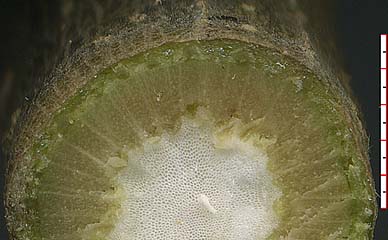
V. virginica |
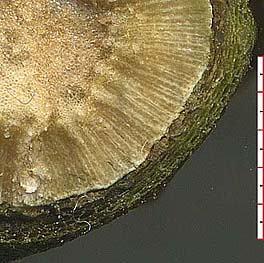
P. odorata |

V. encelioides |
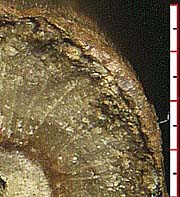
S. canadensis |
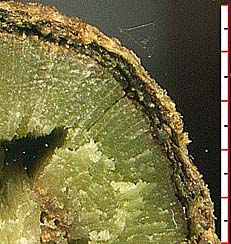
E. serotinum |
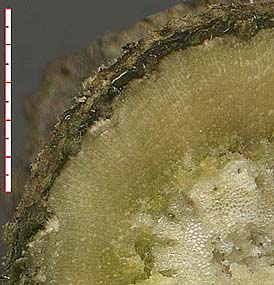
Viguiera dentata |
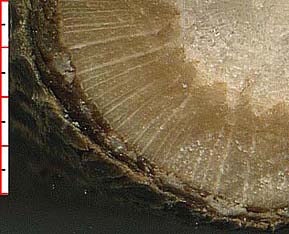
H. maximiliani |
The Epidermis
The epidermis of the two species that exhibit crystallofolia do seem more uniform in surface texture and more tightly grained.
[Images all at the same scale. Click to enlarge.]
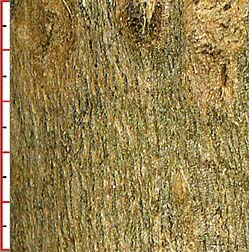
V. virginica
|
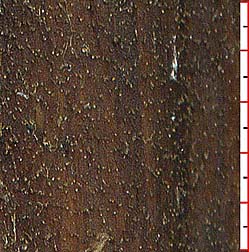
P. odorata
|
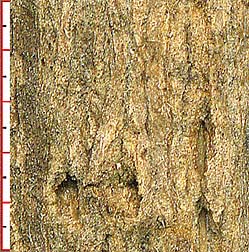
E. serotinum
|
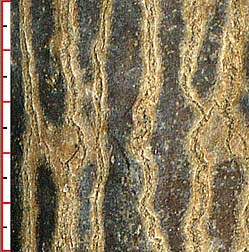
H. maximiliani
|
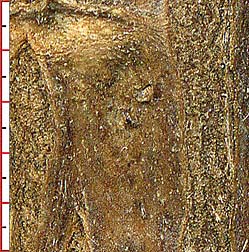
S. canadensis
|